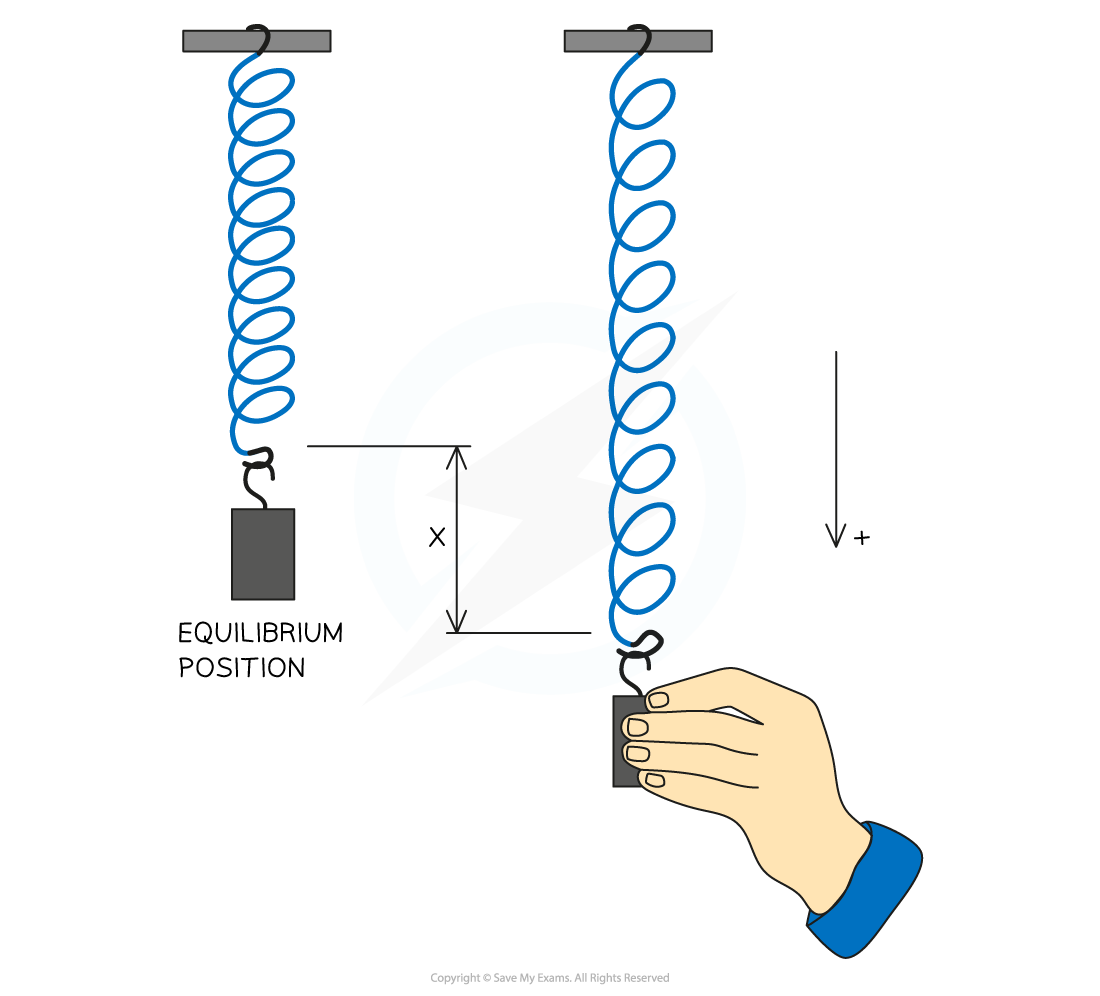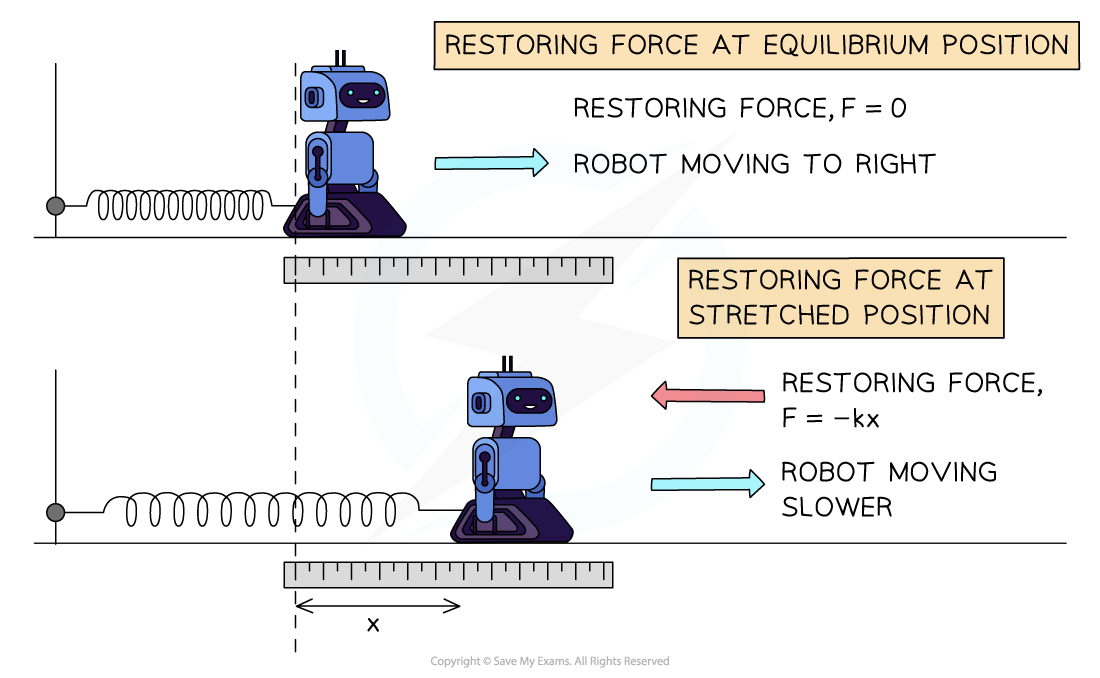Time Period of a Mass–Spring System (DP IB Physics): Revision Note
Time Period of a Mass–Spring System
A mass-spring system consists of a mass attached to the end of a spring
The equation for the restoring force (the force responsible for the SHM) is FH = - kx
This is the same as the equation for Hooke's Law

The time period of a mass-spring system is given by:

Where:
T = time period (s)
m = mass on the end of the spring (kg)
k = spring constant (N m-1)
This equation applies to both horizontal and vertical mass-spring systems:

A mass-spring system can be either vertical or horizontal. The time period equation applies to both
The equation shows that the time period and frequency, of a mass-spring system, does not depend on the force of gravity
Therefore, the oscillations would have the same time period on Earth and the Moon
The higher the spring constant k, the stiffer the spring and the shorter the time period of the oscillation
Worked Example
A 200 g toy robot is attached to a pole by a spring, which has a spring constant of 90 N m−1 and made to oscillate horizontally.
Calculate:
(a) The force that acts on the robot when the spring is extended by 5 cm.
(b) The acceleration of the robot whilst at its amplitude position.
Answer:
(a)
Consider the motion of the robot at the equilibrium and stretched (amplitude) positions:

The restoring force is given by
Using:
Extension,
= 5 cm = 0.05 m
Spring constant,
= 90 N m−1
= −90 × 0.05 = −4.5 N
A force of 4.5 N will act on the robot, trying to pull it back towards the equilibrium position.
(b)
Newton's second law relates force and acceleration by
Using:
Mass, m = 200 g = 0.2 kg
=
= −22.5 m s−2
The robot will decelerate at a rate of 22.5 m s−2 when at this amplitude position
Worked Example
Calculate the frequency of a mass of 2.0 kg attached to a spring with a spring constant of 0.9 N m–1 oscillating with simple harmonic motion.
Answer:
Step 1: Write down the known quantities
Mass, m = 2.0 kg
Spring constant, k = 0.9 N m−1
Step 2: Write down the equation for the time period of a mass-spring system
Step 3: Combine with the equation relating time period T and frequency, f
Step 4: Substitute in the values to calculate frequency
Frequency: f = 0.11 Hz
Examiner Tips and Tricks
Another area of physics where you may have seen the spring constant k is from Hooke's Law. Exam questions commonly merge these two topics together, so make sure you're familiar with the Hooke's Law equation too.
In the second worked example, the frequency calculated is the natural frequency of the mass-spring system, a concept that comes up in the topic of resonance.

Unlock more, it's free!
Did this page help you?